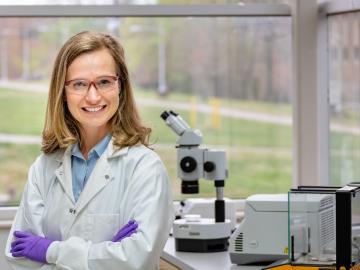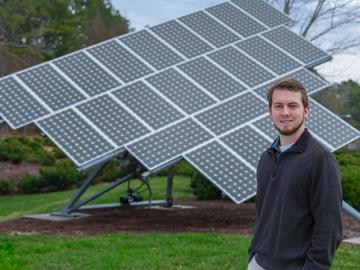
Filter News
Area of Research
- Advanced Manufacturing (6)
- Biological Systems (1)
- Biology and Environment (4)
- Building Technologies (1)
- Clean Energy (60)
- Climate and Environmental Systems (2)
- Computational Engineering (1)
- Computer Science (8)
- Fusion Energy (6)
- Materials (55)
- National Security (5)
- Neutron Science (23)
- Nuclear Science and Technology (11)
- Quantum information Science (3)
- Supercomputing (31)
- Transportation Systems (1)
Date
News Topics
- 3-D Printing/Advanced Manufacturing (15)
- Advanced Reactors (7)
- Artificial Intelligence (12)
- Big Data (7)
- Bioenergy (9)
- Biomedical (5)
- Biotechnology (1)
- Clean Water (5)
- Composites (2)
- Computer Science (35)
- Cybersecurity (5)
- Energy Storage (8)
- Environment (19)
- Exascale Computing (2)
- Frontier (2)
- Fusion (5)
- Grid (5)
- Isotopes (1)
- Machine Learning (5)
- Materials Science (20)
- Mercury (1)
- Microscopy (5)
- Molten Salt (1)
- Nanotechnology (6)
- Neutron Science (18)
- Nuclear Energy (17)
- Physics (6)
- Polymers (2)
- Quantum Science (10)
- Security (2)
- Space Exploration (4)
- Summit (9)
- Sustainable Energy (8)
- Transportation (12)
Media Contacts

Amber McBride is using her expertise in nanotechnology, drug delivery, and disease models to research fundamental challenges in human health in the ORNL Biosciences Division.

Environmental conditions, lifestyle choices, chemical exposure, and foodborne and airborne pathogens are among the external factors that can cause disease. In contrast, internal genetic factors can be responsible for the onset and progression of diseases ranging from degenerative neurological disorders to some cancers.

Tempering, the heating process that gives chocolate its appealing sheen and creamy texture, is a crucial part of crafting quality chocolate. But, at the molecular level, it gets a little tricky, and when done incorrectly, can render entire batches of chocolate gritty and unappetizing.

While learning the ins and outs of utility operations as a part-time dispatcher during college, Ben Ollis coped with issues from storm-damaged power lines to transformer faults caused by snakes crawling into substation equipment

Scientists have demonstrated a new bio-inspired material for an eco-friendly and cost-effective approach to recovering uranium from seawater.

OAK RIDGE, Tenn., May 14, 2019—Advanced Research Systems, Inc., has licensed a technology designed to automatically refill liquid helium used in laboratory equipment for low-temperature scientific experiments, which will reduce downtime, recover more helium and increase overall efficiency.

OAK RIDGE, Tenn., May 8, 2019—Oak Ridge National Laboratory and Lincoln Electric (NASDAQ: LECO) announced their continued collaboration on large-scale, robotic additive manufacturing technology at the Department of Energy’s Advanced Manufacturing InnovationXLab Summit.

OAK RIDGE, Tenn., May 7, 2019—The U.S. Department of Energy today announced a contract with Cray Inc. to build the Frontier supercomputer at Oak Ridge National Laboratory, which is anticipated to debut in 2021 as the world’s most powerful computer with a performance of greater than 1.5 exaflops.

OAK RIDGE, Tenn., May 7, 2019—Energy Secretary Rick Perry, Congressman Chuck Fleischmann and lab officials today broke ground on a multipurpose research facility that will provide state-of-the-art laboratory space

Researchers at the Department of Energy’s Oak Ridge National Laboratory, Pacific Northwest National Laboratory and Washington State University teamed up to investigate the complex dynamics of low-water liquids that challenge nuclear waste processing at federal cleanup sites.


